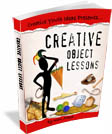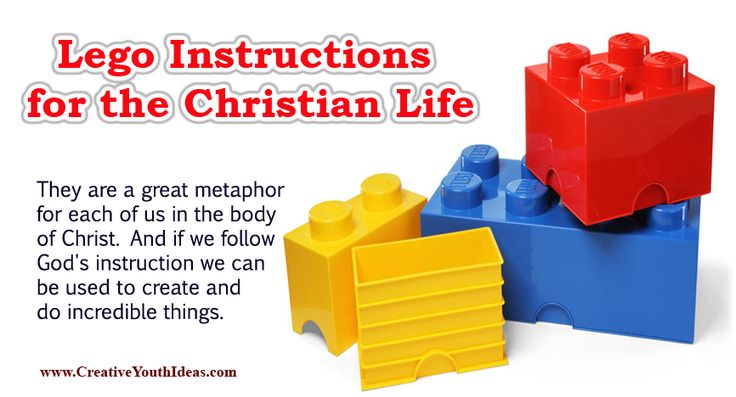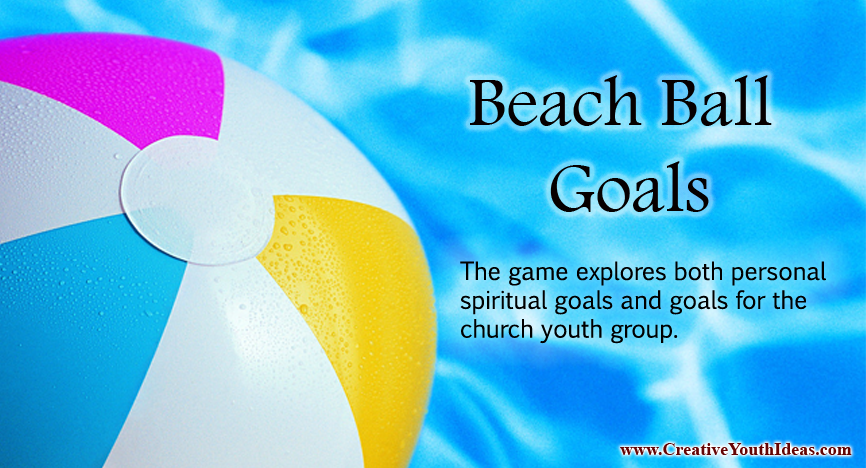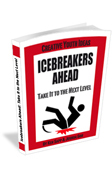LEGOs are one of those toys that are universally loved around the world by all ages. They are simple building blocks in a variety of shapes and colors, but with a little creativity and imagination they can be put together in unlimited combinations to create masterpieces. They are a great metaphor for each of us in the body of Christ. And if we follow God’s instruction we can be used to create and do incredible things.
PLEASE SHARE THIS IDEA ON FACEBOOK – CLICK HERE
Games using LEGOs
- Blind Builder – A player is blindfolded and must construct the item solely from verbal directions from the team. First to team to complete it wins.
- Blind LEGO Construction – Blindfold each team and ask them to build a Lego sculpture using a pile of Lego pieces in front of them. Give awards for the most like a real object, funniest, tallest, longest, most creative, etc
- Fast As You Can – In this game you call out a simple object that can be created from LEGO’s. Each team has three minutes to make one as fast as they can. At the end of the three minutes have a judge decide who sculpture most resembles the object. Play a couple of rounds so there are more chances for winners.
- Guess How Many LEGO Bricks – Guess how many bricks in a lego jar? The winner could go home with the jar of LEGOS.
- I Spy The LEGO Guy – Get several LEGO guys and hide them in various places around the room. The youth or team to locate the most wins.
- LEGO Car Race – Divide the youth group into teams and provide each team with a duplicate pile of plastic LEGO building blocks and four LEGO wheels. Within a given time limit, the team must build a car, create a nickname for the car, a racing team name and choose a mascot. Allow each team to line up their racers on a starting line and race them down a makeshift ramp. Your ramp can be a long table propped up on one end, or even a wide board or two. Have challenges or race all at one go.
- LEGO Chopsticks – Place two bowls in front of each team: one filled with LEGO blocks, and the other empty. Give the youth one minute to move as many LEGO blocks as they can from the full bowl to the empty bowl using only the chopsticks
- LEGO Identity – Give each group an assortment of peices with the instructions to build something that represents them as a group.
- LEGO Me – Have youth select a specific lego piece that represent them as an individual and explain it’s significance. Then have them use all the pieces to build one object.
- LEGO Memory – Before the game, build a structure with Legos (the more complex the structure, the more difficult the activity). Then put the youth in small groups, each group with a bag of Legos (each bag contains the same size, color, and quantity of Legos and has identical stock as that of the structure you built). The group has to exactly replicate the structure you already built. But, the structure to replicate is located outside the room or behind a screen, only one person from each group may look at the structure at a time. They cannot draw or take a picture of the structure to communicate it – they have to use their memory. Each team can look at the structure as many times as they want, but only one person can look at it at a time. The first to replicate the structure – exactly with the same size and color Legos wins.
- LEGO on a string – Have the youth form a circle, facing inward, with one youth in the middle. String a LEGO piece with a hole in it on a long piece of string and then tie the ends of the string together. Place the string inside the circle and have each youth hold it with both hands . The idea is to pass the LEGO around the circle from hand to hand, unnoticed by the youth in the middle . He tries to guess where it is by pointing to the hand he thinks is holding the LEGO. If he is correct, the LEGO holder goes to the middle and the guesser takes his place in the circle . The youth in the middle must keep guessing until he locates the LEGO.
- LEGO Scavenger Hunt – Hide an assortment of LEGO bricks and the youth search for them. You can award point values to the different brick colors and have them compete for a high score.
- LEGO snapshots – Take pictures of simple LEGO structures, and have the youth try to duplicate it from the picture only. You might need a photo from more than one angle to get all the pieces.
- LEGO Tongue Tower – To win this game, the a youth must first put a tongue depressor (or plastic spoon) in their mouth then build a tower of five loose Legos on the tongue depressor (still in their mouth) and then keep the LEGOS balanced for ten seconds.
- Lose the LEGOS – Tape an empty tissue box the rear of each player with the opening facing away from the player. You can do this with team representatives or individually if you have enough tissue boxes. You can also have timed trials to determine the fastest. Once the tissue box is taped on, the time will start and the player must shake their rear to be the quickest to get all of the LEGOS to come out of the tissue box.
- Quickest LEGO Builders – Get a brand new small box of legos, with a picture on the front of the completed set, for each team. Pass it out to the teams and on go they must build the set. Quickest to do so wins. You can also find blueprints for a variety of lego projects at www.letsbuilditagain.com
- Strongest LEGO Bridge – Give each team of youth a set amount of time to build the strongest bridge. Then line up and test them. You can use ziplock bags filled with rice (250grams), soft wrist weights or anything which will not damage your floor when in falls. Amazingly they have been known to hold 5kg (11.02 pounds) so make sure you have enough weight to test them.
- Tallest LEGO Tower – See which team can build the tallest tower in a predetermined time limit without the tower falling over.
- What am I? – Divide the youth into teams and supply each team a pile of Lego parts that include pieces to make cars, trucks and people. Have everyone write down a name of a person, place or thing on a small slip of paper (tell them not to show anyone else). Ask each youth to fold his or her slip of paper and place it in a hat. Mix the slips of paper and ask one member from each team to randomly select one slip of paper. Tell the team member not to show the paper to his or her teammates. Set a kitchen timer for 10 minutes and tell the team member who chose the slip of paper to build whatever was on that slip of paper. It is up to his or her teammates to guess what he or she is building based on his or her creation. No talking or gestures are allowed. The first team to correctly guess the right answer wins that round.
TAKE IT TO THE NEXT LEVEL
Debrief
- What do we need that will help us turn a pile of pieces into a specific shape?
- Do you have to build exactly what is on the LEGO box or in the instructions?
- Can we use the pieces to build other good things as well?
- (If it has step by step instruction) Do you have to follow the instructions?
- What is the advantage of instructions?
- How does a photo, an example or instructions help?
- What could have happened if we didn’t follow the manual?
- How did the groups go about assembling their Lego project? How did each person participate?
- What was frustrating about this activity?
- Why was it difficult/easy to communicate instructions?
- What are other situations that happen in your life where you have to rely on others to communicate information or instructions to you?
- How do you make sure that you understand them completely? What can you do as the person with the information to get your message across to others?
- How do you know where a brick belongs and how it fits into the overall plan?
- Is it sometimes possible for more that one brick to fit in the same?
MAKE IT SPIRITUAL
- What spiritual lessons can we learn from LEGOS?
- What could happen if you don’t follow the instructions?
- How is this like the choices we have in life?
- Were you created with a purpose?
- What other projects or things have you done that require an instruction manual?
- Are there instructions for us to follow in life? As a Christian?
- What are some of the world’s instructions? Those from the Bible?
- How is a lego set like the body of Christ?
- How is the Bible like an instruction manual?
- How is Christ a model for us to follow? (1 Corinthians 11:1)
MAKE IT PRACTICAL
A LEGO manual shows how each piece fits together to form the completed shape and the order or sequence.
How is a lego set like the body of Christ? the youth group?
- made up of many parts.
- Christ is the cornerstone
- The parts fit together to make a whole
- if one part is missing, the whole suffers – to be complete they need each other
- no piece, is more important that the others.
- some relationships are closer than others
- together they form a picture / object
- they didn’t have the instructions or a picture on a box so it was sometimes difficult to know what they were forming
- different people acted as leaders to help them form the picture
- The pieces support each other
- there are different connections – shapes – that connect each
- each piece is different / unique
- Each piece is identified by where it fits into the whole
- Some pieces are easily identified but not more important
MAKE IT PERSONAL
- How can we learn where we belong in the church and the role we each should fill?
- After this activity, ask each youth to take back their LEGO piece as a reminder of the lessons.
SCRIPTURE
- 1 Corinthians 3:11-15 – “For no one can lay any foundation other than the one already laid, which is Jesus Christ. If anyone builds on this foundation using gold, silver, costly stones, wood, hay or straw, their work will be shown for what it is, because the Day will bring it to light. It will be revealed with fire, and the fire will test the quality of each person’s work. If what has been built survives, the builder will receive a reward. If it is burned up, the builder will suffer loss but yet will be saved—even though only as one escaping through the flames.”
- 1 Peter 2:4 – “As you come to him, the living Stone—rejected by humans but chosen by God and precious to him— 5you also, like living stones, are being built into a spiritual housea to be a holy priesthood, offering spiritual sacrifices acceptable to God through Jesus Christ.”
- Ephesians 2:19-22 “Now, therefore, you are no longer strangers and foreigners, but fellow citizens with the saints and members of the household of God, having been built on the foundation of the apostles and prophets, Jesus Christ himself being the chief cornerstone, in whom the whole building, being joined together, grows into a holy temple in the Lord, in whom you also are being built together for a dwelling place of God in the Spirit.”
PLEASE SHARE THIS IDEA ON FACEBOOK – CLICK HERE
 MORE IDEAS? See “Creative Object Lessons”
MORE IDEAS? See “Creative Object Lessons”
200 page e-book that explains everything you need to know when planning your very own object lessons. It contains 90 fully developed object lesson ideas and another 200 object lesson starter ideas based on Biblical idioms and Names / Descriptions of God.
![]()



 Materials
Materials